
This is a list of the National Register of Historic Places listings in Providence, Rhode Island.

The Norwood Avenue Historic District is a residential historic district in Cranston and Providence, Rhode Island. It includes all the properties along Norwood Avenue between Broad Street in Cranston and Green Boulevard in Providence. It is lined with houses built mostly between 1890 and 1930 in the Queen Anne and Colonial Revival styles.

The America Street School was an historic school at 22 America Street in Providence, Rhode Island. The school was a two-story brick structure, built in 1905 to a design by Frederick E. Field. It housed ten classrooms, and was one of four similarly sized schools built by the city between 1887 and 1916. The building served the city as a school until 1955, and was used for a time thereafter as a meeting place for a local branch of the Veterans of Foreign Wars.
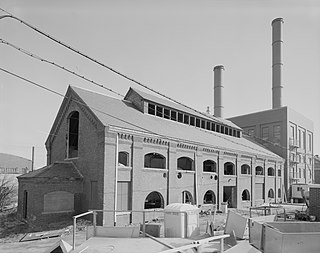
The Chemical Building is a historic wastewater treatment building at Field's Point Wastewater Treatment Facility in Providence, Rhode Island. Built in 1900–01, it is one of the two oldest buildings at Providence's main sewage treatment facility. It is a 2-1/2 story brick structure measuring 103 feet (31 m) by 38 feet (12 m). The long facades are divided into 9 bays, separated by brick piers. When originally built, the structure had a concrete first floor, a wooden second floor, and a loft area accessed by catwalks, and was used to hold and deliver chemicals used to neutralize the wastewater arriving via the Ernest Street Sewage Pumping Station. In the 1930s the plant was converted to use an active sludge process, and the interior of the building was altered to be a single large chamber.

The Covell Street School is an historic school building at 231 Amherst Street in Providence, Rhode Island. It is a two-story wood-frame structure built in a typically elaborate Queen Anne style. Although it is basically rectangular in plan, its roofline and exterior are busy, with a complicated group of cross gables, hip-roof sections, with projecting and recessed sections. A three-story square tower rises from the center of the main facade. Built in 1885 and opened in 1886, it is one of Providence's last surviving 19th-century neighborhood school buildings. It was designed by the local firm of William R. Walker & Son, designers of many Rhode Island civic buildings. The builders were John L. Sprague & Company.
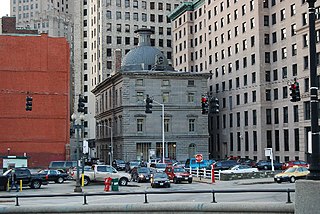
The Customhouse Historic District is a historic district encompassing fifteen historic buildings in downtown Providence, Rhode Island. The district is bounded by Westminster, Exchange, Dyer, Pine, and Peck Streets, and includes eight buildings associated with the important functions of the business center Providence became in the mid-to-late 19th century. It was listed on the National Register of Historic Places in 1975, and is completely contained within the Downtown Providence Historic District, listed in 1984.
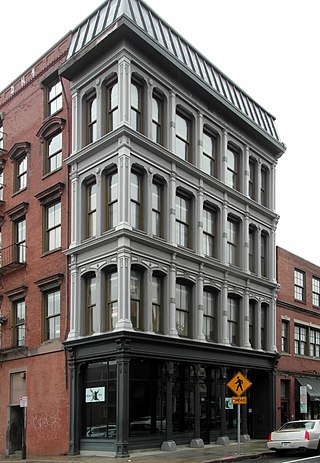
The Elizabeth Building is a historic commercial building at 100 North Main Street in the College Hill neighborhood of Providence, Rhode Island. The five-story masonry building was built in 1872 for noted local developer Rufus Waterman.

The Telephone Building is a historic commercial building at 112 Union Street in downtown Providence, Rhode Island. It was built as the headquarters and exchange of the Providence Telephone Company, which occupied it from 1893 to 1917.

The Sons of Jacob Synagogue, officially Congregation Sons of Jacob, is an Orthodox Jewish congregation and historic synagogue and Jewish museum, located at 24 Douglas Avenue in Providence, Rhode Island, in the United States.

South Providence Library—A Community Library of Providence is an historic branch library building at 441 Prairie Avenue in Providence, Rhode Island. The main portion of the building is a single-story brick Colonial Revival structure, designed by Wallis Howe and built in 1930. Due to the constraints of the lot, Howe's otherwise standard design was altered to place the building gable-end to the street. The street-facing facade has been obscured by a two-level glass-faced modern addition.
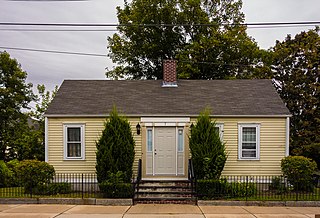
The David Sprague House is an historic house in Providence, Rhode Island. The house was built in 1839 and added to the National Register of Historic Places in 1978.

St. Joseph's Roman Catholic Church is a historic church at 86 Hope Street in Providence, Rhode Island within the Diocese of Providence.

Temple Beth-El, officially known as the Congregation Sons of Israel and David, Temple Beth-El, is a Reform Jewish synagogue located at 70 Orchard Avenue, in Providence, Rhode Island, in the United States.

The Josephine White Block is an historic mixed-use commercial and residential building at 737-739 Cranston Street in the Elmwood section of southern Providence, Rhode Island, United States. It is a three-story structure with a stamped-metal facade, and sidewalls of brick and clapboard. It was built c. 1894 for Josephine White, a widow who lived nearby, and houses two storefronts in the first level and four living units above. The metal facade is the only known local installation of the St. Louis, Missouri-based Mesker Brothers, a nationally known manufacturer of metal architectural elements.

King Philip Mills is an historic cotton mill complex located at 372 Kilburn Street in Fall River, Massachusetts. Developed between 1871 and 1892, it was historically one of the city's largest mills, and its building inventory is still largely complete. The complex was added to the National Register of Historic Places in 1983.
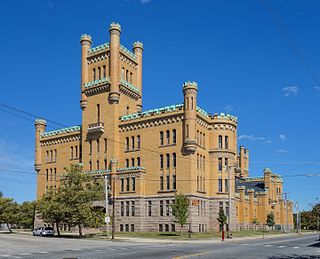
The Cranston Street Armory is an historic building in the Broadway–Armory Historic District of Providence, Rhode Island. It was built in 1907 at a cost of $650,000.00. The building was occupied by the Rhode Island National Guard from its opening until 1996. Since then, parts of the building have been used as film studios, and some of its offices occupied by the Rhode Island State Fire Marshal. The National Trust for Historic Preservation listed the Armory as one of "America's 11 Most Endangered Historic Places" in its annual list for 1997. Its distinctive yellow bricks, crenellated turrets, and decorative stonework mark it as a historically significant building and neighborhood icon.

Rosedale Apartments are a historic apartment house at 1180 Narragansett Boulevard in Cranston, Rhode Island. This U-shaped apartment block stands overlooking Narragansett Bay, with three stories facing the street and four toward the bay. The Art Moderne structure was designed by Herbert R. Hunt and built in 1939–40. It is a rare statewide example of a large-scale building in this style, and was one of only a few built in Cranston before the Second World War.
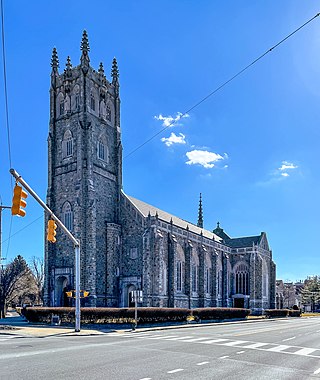
Ambrose J. Murphy (1869–1949) was an American architect whose practice was based in Providence Rhode Island. He was a specialist in ecclesiastical work and, in a career that spanned over 40 years, designed many buildings for the Roman Catholic Diocese of Providence Rhode Island and Fall River Massachusetts.

William R. Walker & Son was an American architectural firm in Providence, Rhode Island, active during the years 1881 to 1936. It included partners William Russell Walker (1830–1905), William Howard Walker (1856–1922) and later William Russell Walker II (1884–1936).
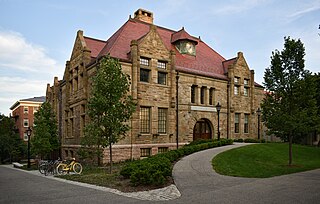
Thomas J. Gould (1849-1923) was an American architect from Providence, Rhode Island.





























